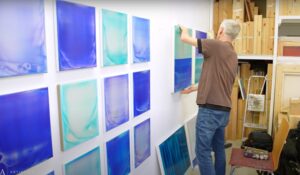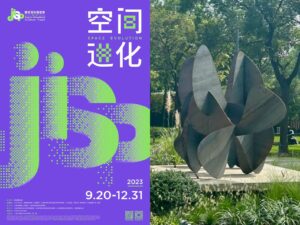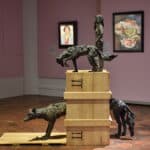In this series of interviews, Artistics Gallery invites you to question the link between art and dance. Photographer Klaus Kampert follows sculptor Cécile Raynal, confronting himself on the same theme: the link between his art and dance.

172.01.12, Dancing Rays of light Series, Klaus Kampert
Klaus Kampert is a German photographer who works in Düsseldorf. He practiced drawing, sculpture and painting from an early age, which naturally led him to try other artistic mediums such as photography. In the eighties, Klaus made photography his main activity. As he first worked in fashion, the relationship between his artistic production and the body has been gradually developped, until the staging of bodies represented the heart of its creation. Thanks to experience and work, the photographs of Klaus Kampert take a certain distance with figuration, in particular because of the abstract possibilities that the human body and its movements propose, but also thanks to his meeting with particular models who became real sources of inspiration: dancers.
The link between photography and dance lays in a movement: a photograph breaks down the movement while dance is a dynamic activity, precisely composed of a succession of movements. Klaus Kampert’s photographs freeze the body and allow the viewer to focus on the aesthetic form it creates. Thus, behind Klaus Kampert’s lenses, the dancers’body becomes the raw material for the photograph.
A: Are the Ballet dancers among your favorite models? If so, why? Which are the peculiarities of these models?
In arts you have the phenomenon of the “Gesamtkunstwerk”, the universal artwork, meanning that different art disciplines work together as a whole. For instance drama, musik text and dance in the opera. In my view the dancer is such an universal artwork. Dancers experience their body from a young age on as a means of expression. They train up their bodies, their mind and emotions and achieve a conciousness of their wholeness, knowing that excellence is very close to perfection but never reached. So when I work together with dancers I don´t have to explain what a perfect image looks like, theyalready know it. Also, their bodies speak of the permanent struggle for many years. They are slim, toned, they have a lean muscle structure and a high flexibility. Professional dance is not a profession but an attitude towards life. All these accomplishments are very much in accord with my work.

168.05.12, Wrapped Series, Klaus Kampert
A: Are you only interested in Ballet or in other type of dance ?
I love them all:, classical, neoclassical, contemporary dance. My main interest is movement as such. I am enthusiastic about a well trained figure carrying out expressive steps and surprising movements, be it in perfect line with the music, dramatic or strange, even weird parts are fine.

105.03.97, Moonstruck Series, Klaus Kampert
A: In 2004 you had the opportunity to create a calendar for the ballet of Deutsche Oper am Rhein in Dusseldorf, and thus the series Ballet Calendar was born. Can you tell us more about this project? How did you develop the concept for these photographs? What did you want to highlight about the dancers, their bodies, their skills, or their job?
The director and choreographer Youri Vamos, Deutsche Oper am Rhein asked me to do a shooting for a ballet calendar and at the same time gave me a free hand for the concept. So I decided to find a solution which placed the dancer at the center but tell about the choreography as well, although not its length. I took the dancers off the stage into the studio with minimal backgrounds and without clothes and took the photographs in black&white. With a dramatic lighting concept I elaborated their bodies and we worked on the expressions of the bodies, constantly to underline their skills and attitude. Together with the dancers and the choreographer we found typical sequences of the pieces to perform. Thus we created a calendar which emphasized a portrait of the dancers without neglecting the pieces and created unique photographs which told a different story than most ballet calendars do. The calendar and the exhibition of the images were very well received by the audience and the public. … and it was fun!

127.11.04, Ballet Calendar Series, Klaus Kampert
On the same subject “Contemporary art and Dance : 3 questions to Cécile Raynal”





